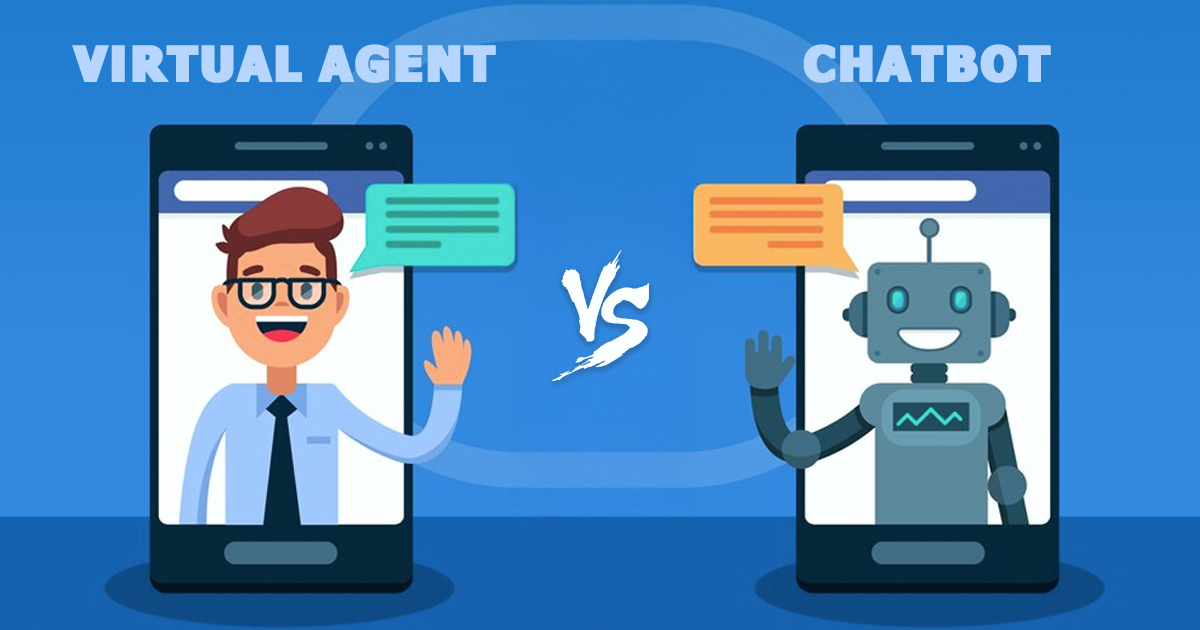Chatbot vs. Virtual Agent: Capabilities, Applications, & Choosing the Right Tool

Artificial intelligence (AI) has become a big part of our daily lives, helping both businesses and individuals save time and improve efficiency. AI tools like chatbots and virtual agents are at the center of this revolution. According to a recent study, the chatbot market is expected to grow to $10.5 billion by 2026, and virtual agents like Siri and Alexa are used by one-third of U.S. adults daily. But what’s the difference between these two technologies, and which one is right for you?
What Are Chatbots?
Chatbots are computer programs designed to interact with users and provide quick responses to specific questions or tasks. They’re commonly used by businesses to handle customer support, such as answering frequently asked questions or helping users track orders. Chatbots work well for structured, straightforward interactions.
You’ve probably seen chatbots in action on e-commerce websites or through text-based customer service chat tools. These bots can either be rule-based, which means they follow pre-written scripts, or AI-powered, which makes them more flexible in their responses. For example, if you type “What’s my order status?” into a chatbot, it will pull up your details and provide an answer.
Where Chatbots Excel:
- In e-commerce, it helps customers find products or check delivery updates.
- In education, it answers common student questions about admissions.
- In traveling, it assists with flight bookings or providing weather updates.
- In retail, brands like Zobot guide shoppers or suggest products based on browsing habits.
- In finance, chatbots can help users block a lost credit card or check account balances.
- In healthcare, some bots provide symptom checks or vaccination reminders.
What Are Virtual Agents?
Virtual agents are more advanced and capable of handling complex interactions. They use technologies like natural language understanding (NLU) and machine learning, allowing them to process not just words but the intent and context behind them. Virtual agents can carry out multi-step tasks, offer recommendations, and even adapt their responses over time.
A great example is Amazon’s Alexa or Apple’s Siri. These tools not only answer questions but can also manage your calendar, play music, or control smart home devices. Virtual agents often feel more “human” in their interactions because they keep track of conversations and use that context to provide a better experience.
Where Virtual Agents Shine:
For smart homes, it adjusts lights, locks doors, or plays music with a simple voice command. Siri can set reminders, Alexa manages your grocery list, and Google
Assistant adjusts your thermostat.
- In healthcare, it helps schedule appointments or remind users to take their medication.
- In human resources, they assist employees with onboarding or payroll queries.
- In fitness tracking, virtual agents integrate with wearables to monitor workouts or provide health insights.
- In enterprise use, virtual agents help employees book meetings or generate analytics reports.
Key Differences Between Chatbots and Virtual Agents
1. Level of Intelligence
Chatbots follow pre-set scripts or basic AI, meaning they excel at simple tasks but struggle with unstructured, complex queries.
Virtual agents use advanced AI and adapt to user behavior, making them better at understanding nuanced or multi-step requests.
2. Functionality
Chatbots are task-oriented, handling single-purpose jobs like answering FAQs or guiding users through a website.
Virtual agents are more versatile, capable of handling broader tasks like managing schedules, providing detailed recommendations, or controlling devices.
3. User Interaction
Chatbots often rely on text-based communication, guiding users step-by-step through questions or menus.
Virtual agents offer a more natural experience using voice, text, and sometimes even gestures.
Can You Use a Chatbot for Virtual Assistant Jobs, or Vice Versa?
Chatbots and virtual agents are designed for different purposes, so while there’s some overlap, you can’t always use one as a replacement for the other. Chatbots work best for simple, repetitive tasks like answering questions or guiding users through a process. For example, they’re ideal for customer support queries like “What’s your return policy?” but wouldn’t excel at managing complex conversations or multi-step workflows.
On the other hand, virtual agents are equipped to act as personal assistants or handle more complex tasks that involve context or decision-making. While they can answer questions like chatbots, they are better suited for managing calendars, providing personalized suggestions, or controlling devices in your home.
That said, advancements in AI are bridging the gap. Some chatbots are becoming smarter and more adaptive, while virtual agents are starting to integrate chatbot-like capabilities for simpler tasks. For now, though, the key is to match the tool to the job:
- Use a chatbot for tasks that are straightforward and repetitive.
- Opt for a virtual agent when you need a more sophisticated tool to manage dynamic, multi-step tasks.
Understanding their strengths will help you decide which AI tool is the right fit for your purpose. And remember, as technology continues to evolve, these tools may blend their capabilities even further, offering you the best of both worlds!
